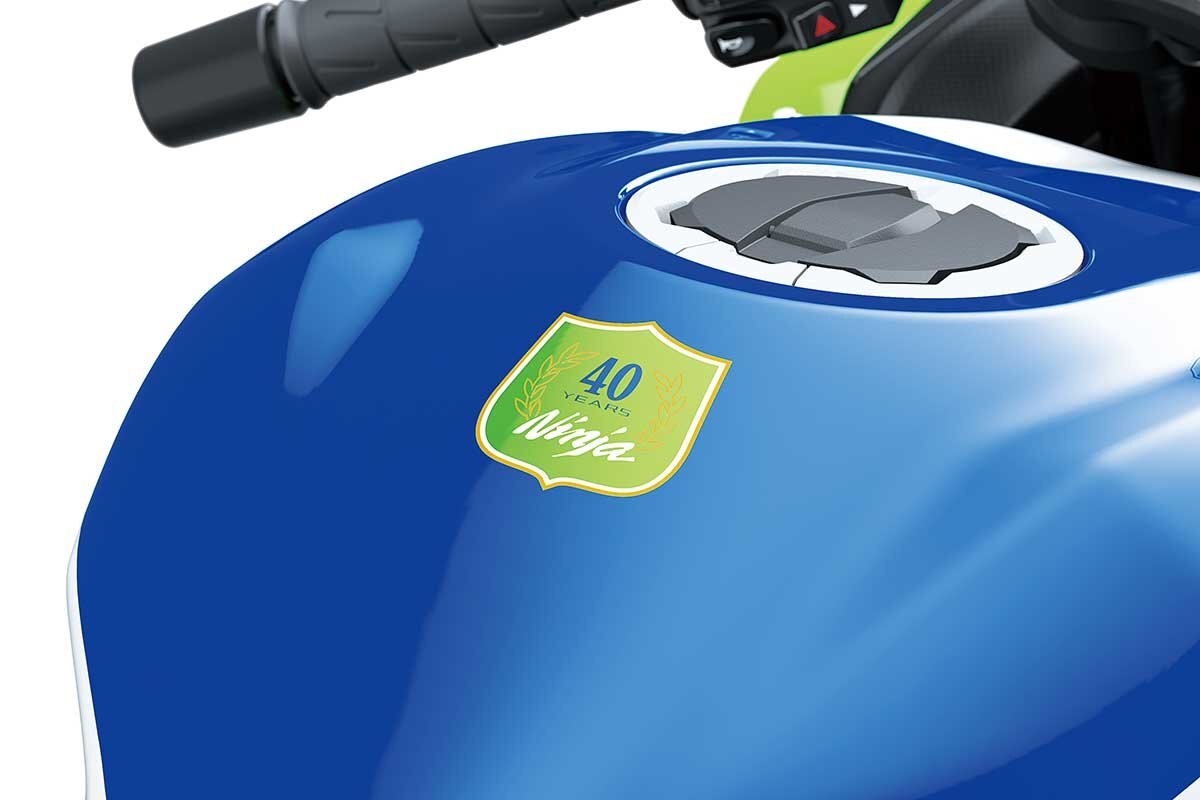



2024 Kawasaki NINJA ZX-4RR 40th ANNIVERSARY EDITION
Into a category filled with 400cc sport models, Kawasaki introduces a revolutionary supersport model ...
Overview
| Into a category filled with 400cc sport models, Kawasaki introduces a revolutionary supersport model. The Ninja ZX-4R mounts a 399cc in-line four engine with class-leading performance in a compact chassis with proportions essentially the same as the Ninja ZX-25R. On the track or on the street, experiencing the exhilaration of the Ninja ZX-4R’s heady power, intoxicating high-rpm wail, and its sharp, nimble handing will surely awaken the dormant supersport within you. |
FEATURING
|
ADDITIONAL VEHICLE FEATURES
|
Specifications
Gallery
technology
ASSIST & SLIPPER CLUTCH
|
ECONOMICAL RIDING INDICATOR
Using high-precision electronic control for engine management, Kawasaki models can achieve a high level of fuel efficiency. However, fuel consumption is greatly affected by throttle use, gear selection, and other elements under the rider's control. The Economical Riding Indicator is a function that indicates when current riding conditions are consuming a low amount of fuel. The system continuously monitors fuel consumption, regardless of vehicle speed, engine speed, throttle position and other riding conditions. When fuel consumption is low for a given speed (i.e. fuel efficiency is high), an "ECO" mark appears on the instrument panel's LCD screen. By riding so that the "ECO" mark remains on, fuel consumption can be reduced. |
KQS (KAWASAKI QUICK SHIFTER)
Designed to help riders maximize their acceleration on the track by enabling clutchless upshifts with the throttle fully open, KQS detects that the shift lever has been actuated and sends a signal to the ECU to cut ignition so that the next gear can be engaged without having to use the clutch. On models that offer clutchless downshifts, during deceleration the system automatically controls engine speed so that the next lower gear can be selected without operating the clutch. |
POWER MODES |
KTRC (KAWASAKI TRACTION CONTROL)
KTRC, Kawasaki's advanced traction control system provides both enhanced sport riding performance and the peace of mind to negotiate slippery surfaces with confidence. Multiple rider-selectable modes (the number of modes varies by model) offer progressively greater levels of intrusion to suit the riding situation and rider preference. |
Smartphone Connectivity
|
ABS (ANTI-LOCK BRAKE SYSTEM)Kawasaki ABS systems use front and rear wheel sensors to constantly monitor wheel speed. Should information from either of the sensors indicate that wheel lock has occurred, the ABS ECU directs the pump in the ABS unit to modulate brake fluid pressure (releasing and reapplying pressure so that traction can be regained) until normal operation resumes. ABS offers rider reassurance that contributes to greater riding enjoyment. |
HORIZONTAL BACK-LINK REAR SUSPENSIONCompared to the Kawasaki traditional Uni-Trak rear suspension, which mounts the shock unit vertically, with Horizontal Back-link Rear Suspension, the shock unit is almost horizontal. The original Kawasaki suspension arrangement locates the shock unit very close to the bike's center of gravity, greatly contributing to mass centralization. And because there is no linkage or shock unit protruding beneath the swingarm, this frees up space for a larger exhaust pre-chamber (an exhaust expansion chamber situated just upstream of the silencer). With a larger pre-chamber, silencer volume can be reduced, and heavy exhaust components can be concentrated closer to the center of the bike, further contributing to mass centralization. The result is greatly improved handling. A secondary benefit is that the shock unit is placed far away from exhaust heat. Because it is more difficult for heat from the exhaust system to adversely affect suspension oil and gas pressure, suspension performance is more consistent. |






















